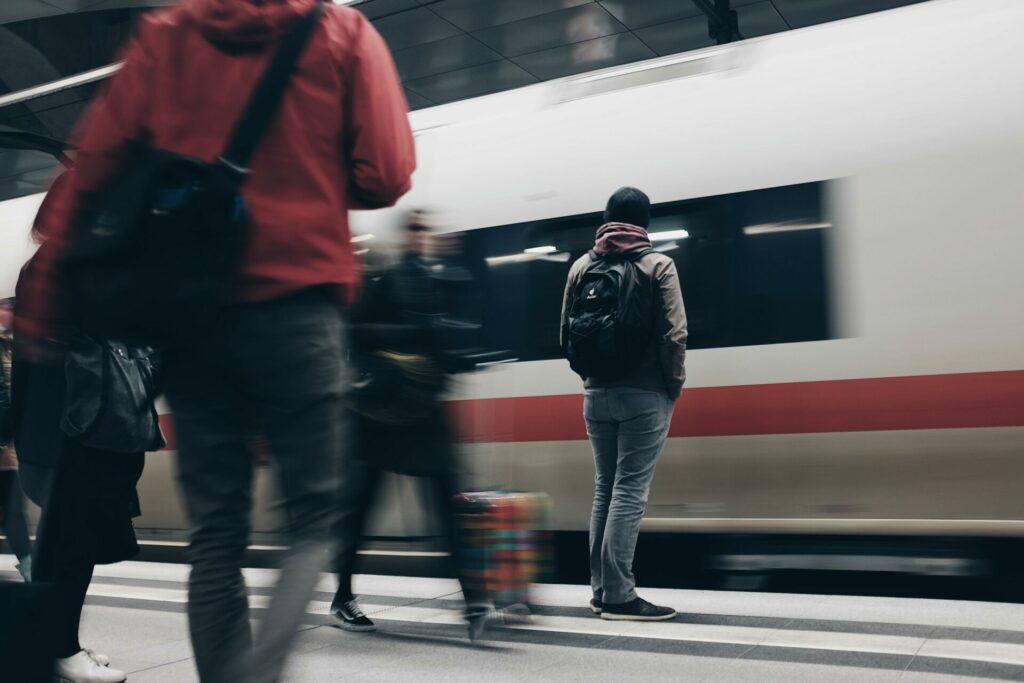Hardly any industry is as closely linked to technical innovation as the railway. With its decisive role for transport, trade, commerce and society, it laid the foundation for nationwide industrialisation. While the railways played a key role in shaping the first industrial revolution, the now fourth one contains immeasurable potential with technical innovations such as the Internet of Things, artificial intelligence and blockchain. In this article, we discuss some of the key trends and predictions that will shape the future of rail industry in the coming years.
Trains have been used to transport people, goods and resources for 200 years. Today, the world’s railways are facing a fundamental shift from traditional operating methods to a connected, data-driven and customer-centric approach, optimising operations, improving safety and enhancing comfort. Technology plays a key role in shaping the future of the rail industry.
Five trends on the future of rail that will be with us in the next years:
Automation
Automation is one of the most important trends that will shape the rail industry in the future. One aspect of this is autonomous driving: The use of driverless trains is already taking place in local transport in many countries. In Hamburg, for example, the Digital S-Bahn has been commuting since September 2022; in France, metros are already running autonomously in five cities. Test projects are currently still underway in long-distance and freight transport. For example, East Japan Railway (JR East) has already sent the first driverless Shinkansen on a fully automated test run at the end of 2021.
Decarbonisation
Rail is already the most environmentally friendly means of mass transport. Nevertheless, there is a need to reduce carbon emissions in order to mitigate climate change. Complementing the ongoing electrification and the supply of green electricity to regional and goods trains, hydrogen as a substitute for diesel is seen as the key to decarbonisation. Another lighthouse project is currently being built in northern Germany. Battery-powered trains charge on sections of track with overhead lines, eliminating the need for continuous electrification of every kilometre of track.
New technologies
Digitalisation has been changing the rail industry for a long time. With the use of IoT sensors, data analytics and AI, a new dimension of data-driven decision-making is being achieved. Real-time monitoring of tracks and parts such as switches enables predictive maintenance. Early detection of faults reduces time-consuming and costly maintenance.
Enhanced services
Railway companies need to develop strategies to improve customer satisfaction and generate new target groups and revenue streams. One example is the business zones in 1st class of SBB’s InterCity trains. Travellers can book workstations here instead of balancing their laptop on their lap or having to share the table in the open-plan carriage with other passengers. Amplifiers ensure improved mobile phone reception and optimised data transfer. The Hamburg S-Bahn also offers the possibility of mobile working with its “Ideenzug” (Train of ideas).
Harmonisation of train control systems
There are more than 20 different train control systems in Europe. This is to be harmonised by the European Train Control System (ETCS) in the course of the European Rail Traffic Management System (ERTMS). The expansion is taking place at quite different speeds. Switzerland, Denmark and Belgium are implementing quickly, France and Germany are still lagging behind.
What are the advantages of these trends?
Improved safety
Automation, predictive maintenance and real-time monitoring technologies will reduce the risk of accidents and incidents, resulting in increased safety.
Increased efficiency
The use of smart technologies increases efficiency in the rail industry. Downtime is reduced while optimising schedules and operational planning. Overall, productivity is increased.
Improved customer experience
Rail travel must be easy and convenient for passengers. In addition to the basics such as punctuality and reliability, smart technologies help to increase customer satisfaction and make the journey a positive experience.
Lower costs
Increasing efficiency and productivity aims to reduce costs in the rail industry. Rail companies and passengers alike benefit from the savings.
Increased capacity
Since 1995, the transport performance of rail passenger transport in Germany has increased by almost 44 percent. In the case of freight transport by rail, the increase is even more than 83 percent. With the help of digitalisation, capacity on the existing rail network can already be increased by over 30 percent.
Transfer needed: Trends should shift modal split in favour of rail
The last two points in particular are important. Because ultimately, all innovations must aim to get as many people as possible to switch from car or plane to rail. Giles Clifford, partner for railway infrastructure at Gowling WLG, puts it in Railway Technology using decarbonisation as an example: “However, greener railways matter little if they aren’t being used. With rail already the most energy-efficient means of motorised passenger transport, capitalising on its environmental benefits will require getting passengers off roads and onto rail.”
Figures from Germany show: There is still room for improvement. In 2022, about 8.8 percent of Germans used rail for passenger transport, while about 82 percent travelled by car. Deutsche Bahn’s goal: to double passenger numbers in long-distance rail transport, reducing five million car journeys and 14,000 air journeys every day. The modal split, i.e. the distribution of transport volume among different means of transport, can only change in favour of rail if the switch is sufficiently attractive.
The trends show: Technology will play an increasingly decisive role in shaping the future of rail. At AXO, we are contributing to this by redefining maintenance. Contact us to find out more.


